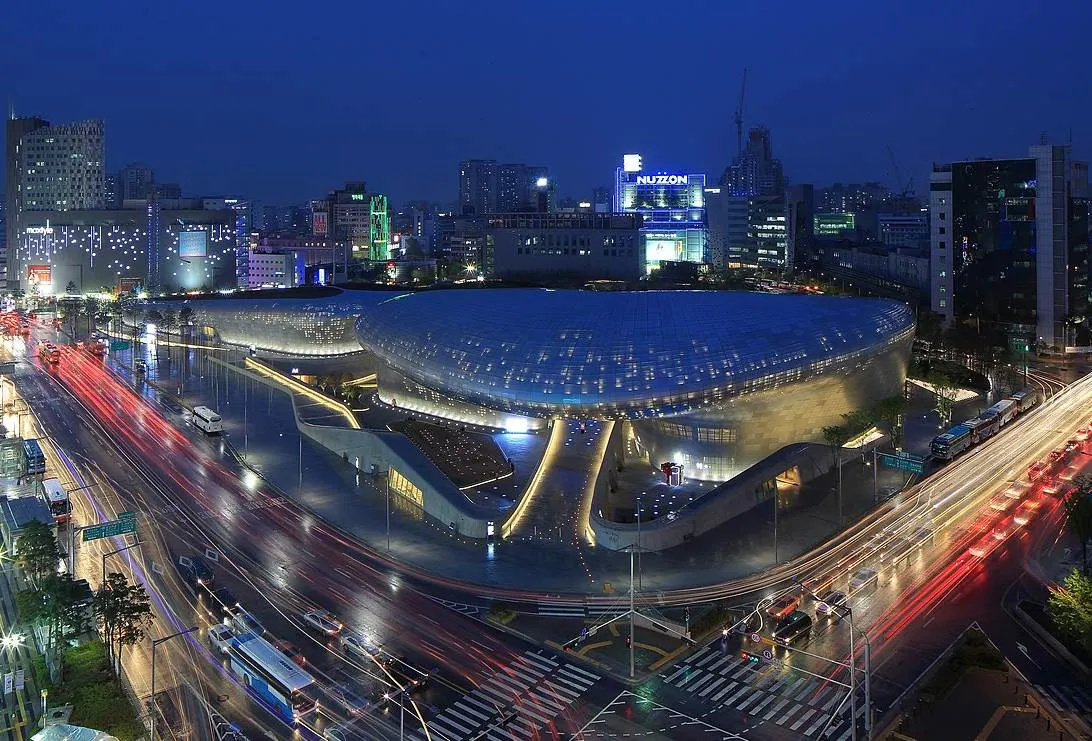Neo-Futurism is a relatively recent style of arts, design, and architecture, which emerged in the late 20th and early 21st centuries.
The architectural style emerged from both High-Tech Architecture and the distinctive buildings designed by world-famous architects Zaha Hadid and Santiago Calatrava.
The style was accentuated at the time that the Universal Expo 2015 took place in Milan. Italian designer Vito Di Bari wrote a manifesto describing Neo-Futurism in which he stated that:
Cross-pollination of art, cutting-edge technologies, and ethical values should be combined to produce a higher quality of life.
His vision for the future of his native Milan was echoed by a collective from the United Kingdom called the Neo-Futurist Collective which write its manifesto.
Just like High-Tech buildings, buildings designed in the Neo-Futurism style are derived from advancements in technology.
Let’s take a closer look at some of the most famous Neo-Futurism buildings from all around the world.
1. Burj Khalifa
Burj Khalifa is the tallest building in the world which makes it the most prominent example of Neo-Futurism Architecture. This incredible skyscraper stands 829.8 meters (2,722 feet) tall and dominates the landscape from miles away.
The building was designed by American architect Adrian Smith and his team at Skidmore, Owings & Merrill. The concept of the building was to design a building in Dubai that resembles Islamic buildings. This way it incorporates traditional Islamic architecture into a modern building that was completed between 2004 and 2009.
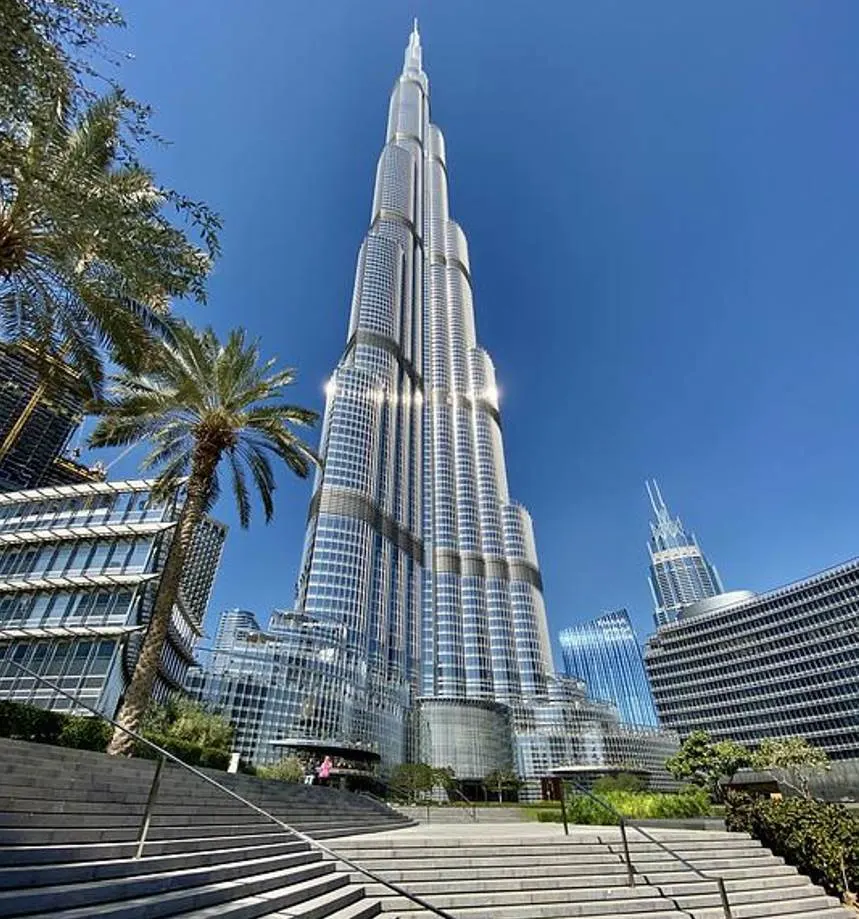
2. Liège-Guillemins Railway Station

Liège-Guillemins is the common name of one of the most beautiful train stations in Europe. It’s located in the city of Liège and is arguably one of the most stunning buildings in Belgium. This modern building is the fourth version of the railway station that occupies this location.
The railway station was designed by Spanish architect Santiago Calatrava and features an incredible arch that has a length of 160 meters (520 feet) and a height of 32 meters (105 feet). It was quite an expansive structure as well with a total price tag of €312 million upon completion in 2009.
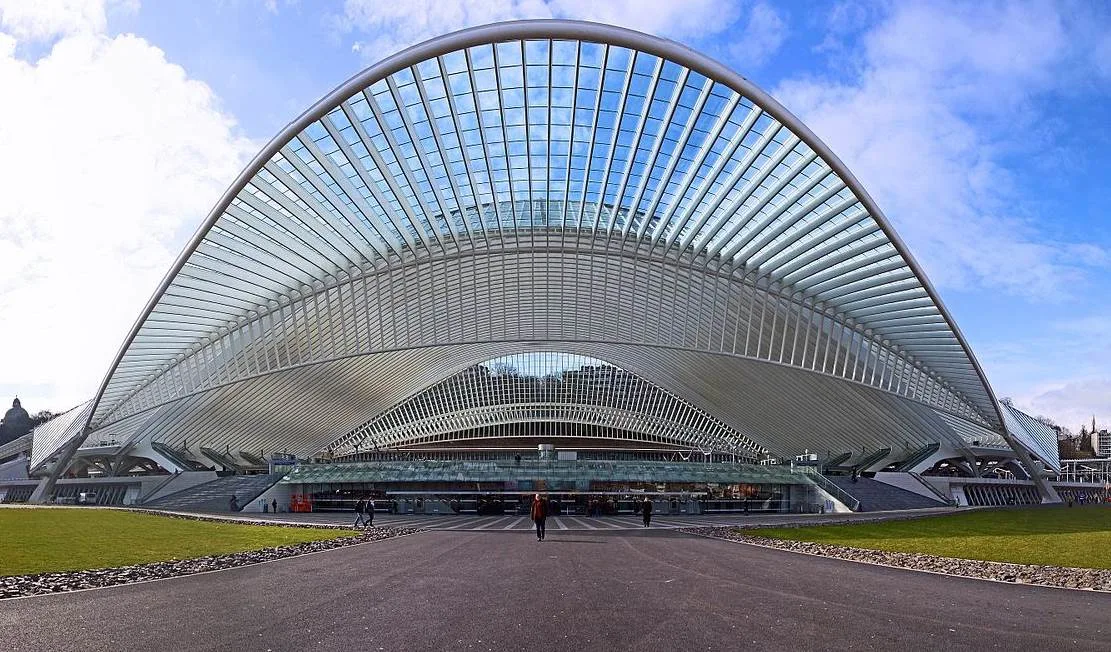
3. Turning Torso
The Turning Torso is the name of a revolutionary skyscraper that was constructed in Malmö, Sweden. It has become one of the most iconic buildings in Sweden because it was the first skyscraper that integrated a curving twisting design upon completion in 2004.
This is a feature integrated by numerous skyscrapers in the following years. It’s another building that was designed by renowned Spanish architect Calatrava and it has won several awards since it was opened in 2005. The building stands 190 meters (620 feet) and is the ultimate symbol of the third-largest city in Sweden.

4. The Shard
The Shard is the tallest skyscraper in London and the tallest building in the United Kingdom as well. It stands 309.6 meters (1,016 feet) and dominates the Southwark district, a borough on the south bank of the River Thames in central London, where it’s located. It has done so since it was completed in 2012.
The building was designed by renowned Italian architect Renzo Piano, famously known for being involved in the design of the Centre Pompidou in Paris. The idea behind the remarkable design of the building is to resemble the spire of a Gothic cathedral that emerges from the Thames.

5. Evolution Tower
The Evolution Tower is one of the many twisting skyscrapers that was inspired by the Turning Torso in Malmö. It’s a building in Moscow that is located in the MIBC or “Moscow International Business Center.” This amazing Neo-Futurism building was completed between 2011 and 2014.
The building stands 246 meters (807 feet) which remarkably makes it one of the shorter skyscrapers in this area. The fascinating DNA-like twisting design makes it stand out, though. It was designed by British architect Tony Kettle in collaboration with Karen Forbes of the University of Edinburgh.
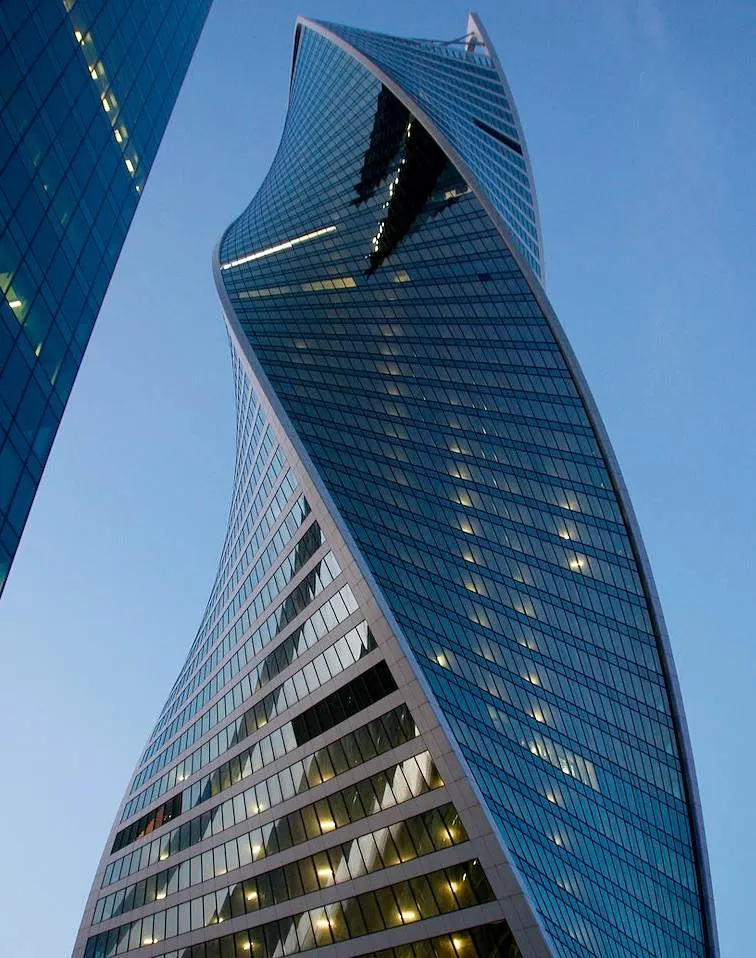
6. Walkie-Talkie Building
The Walkie-Talkie Building is the common name of a skyscraper in the City of London that is officially known as 20 Fenchurch Street. The building is situated in the financial district of the city and was completed between 2009 and 2014 and has a remarkable design by Uruguayan architect Rafael Viñoly.
The building only stands 160 meters (525 feet) tall but is one of the most prominent buildings in London. Its unique design, which has been criticized endlessly, incorporates a sky garden at the top of the structure. The fact that this public space is free to visit is the only positive notion given by its critics.
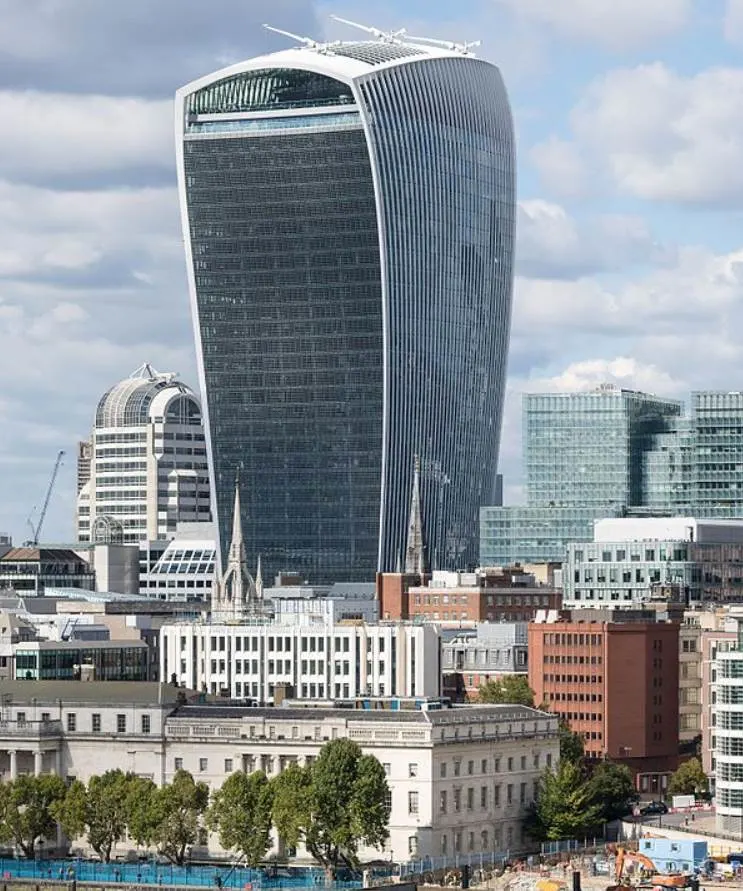
7. Palau de les Arts Reina Sofía
Palau de les Arts Reina Sofía is a stunning opera house in the Spanish city of Valencia. It’s situated at the northwestern corner of the City of Arts and Sciences, an immense cultural and architectural complex designed by Santiago Calatrava in his native city.
The construction of the City of Arts and Sciences was begun in 1995 and this incredible opera house was the final major addition to the complex. It was completed in 2005 and has a roof with a length of 230 meters (755 feet). The building stands 75 meters (246 feet) tall which makes it the tallest opera house in the world.
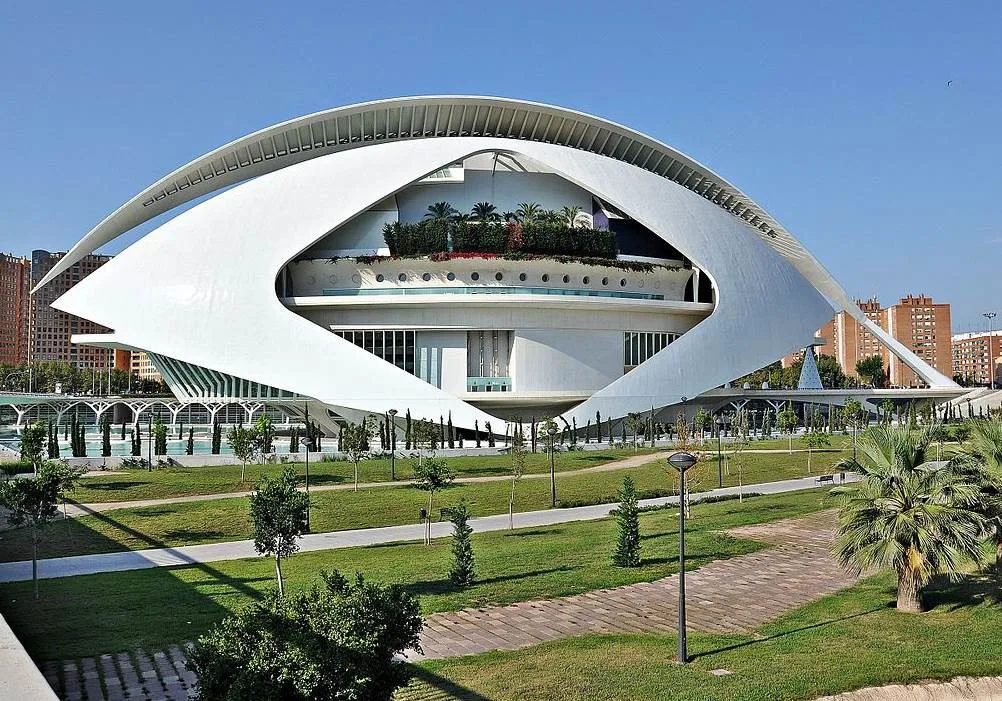
8. Shanghai World Financial Center
The Shanghai World Financial Center is a skyscraper in Shanghai and one of the three supertall towers in the Pudong District of the city. The building was designed by Kohn Pedersen Fox and although constructed had started in 1997, this stunning Neo-Futurism building wasn’t completed until 2008.
The building features a huge skybridge at the top which has earned it the nickname “The Bottle Opener.” It stands 492 meters (1,614.2 feet) which made it the second-tallest building in the world when it topped out in 2007. It’s adjoined by two other supertall towers called the Shanghai Tower and the Jin Mao Tower.
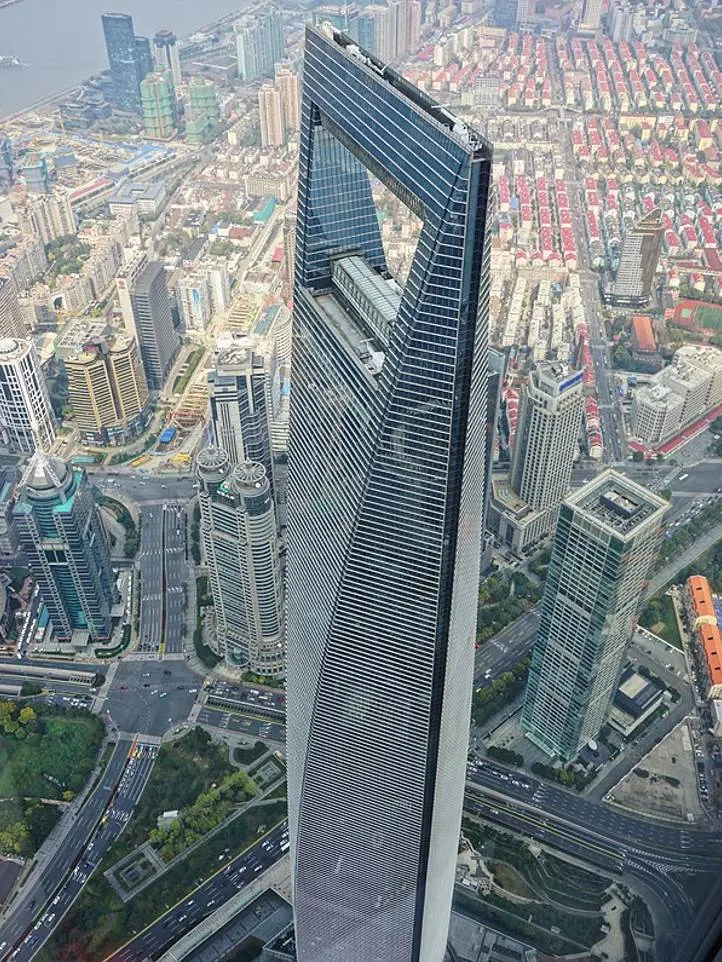
9. Apple Park
Apple Park is the name of the incredible corporate headquarters of Apple Inc. in Cupertino, California. This building in California was designed by renowned English architect Norman Foster and is the epitome of what is referred to as a groundscraper, a structure with few stories but which greatly extends horizontally.
The entire complex was constructed on a site that covers an area of 1.46 square kilometers (360 acres). The circular building was completed between 2013 and 2017 and can house 12,000 employees. The total cost of this building dubbed “The Spaceship,” which includes the $160 million plot of land, was a staggering $5 billion.
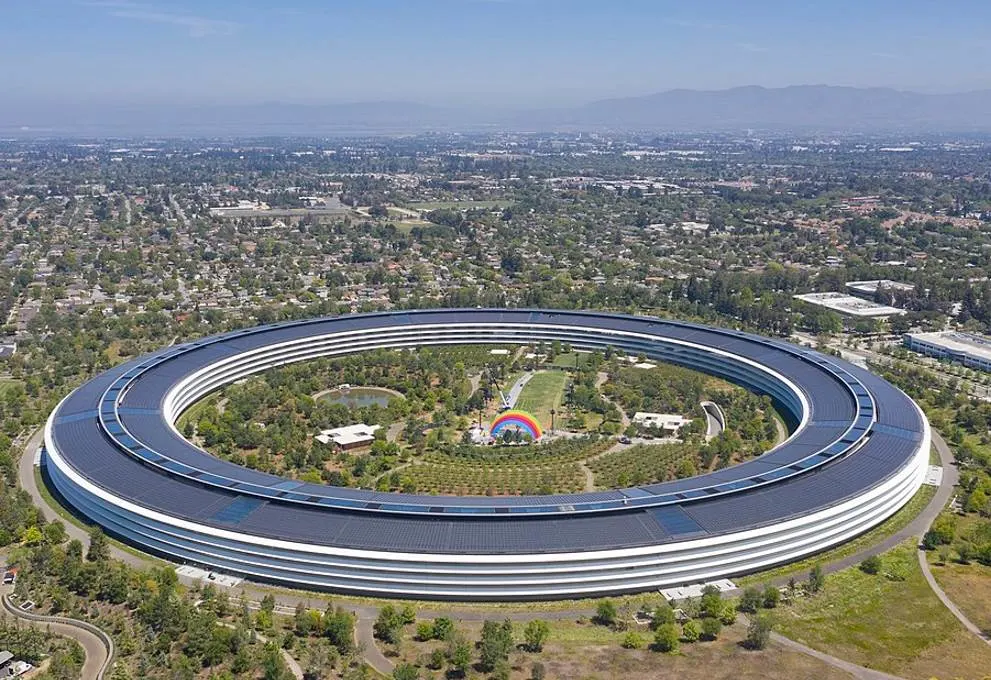
10. Dongdaemun Design Plaza
Dongdaemun Design Plaza is a huge building in Seoul, the capital city of South Korea. It’s one of the most distinctive Neo-Futurism buildings ever constructed and was designed by British-Iraqi architect Zaha Hadid in collaboration with South Korean architectural firm Samoo.
The building features large exhibition spaces, a shopping mall, and a roof that features a walkable park. It’s one of the most popular tourist attractions in the city and its design is dominated by elongated curves that perfectly blend into the urban landscape. Yes, this is what Neo-Futurism architecture is all about!
